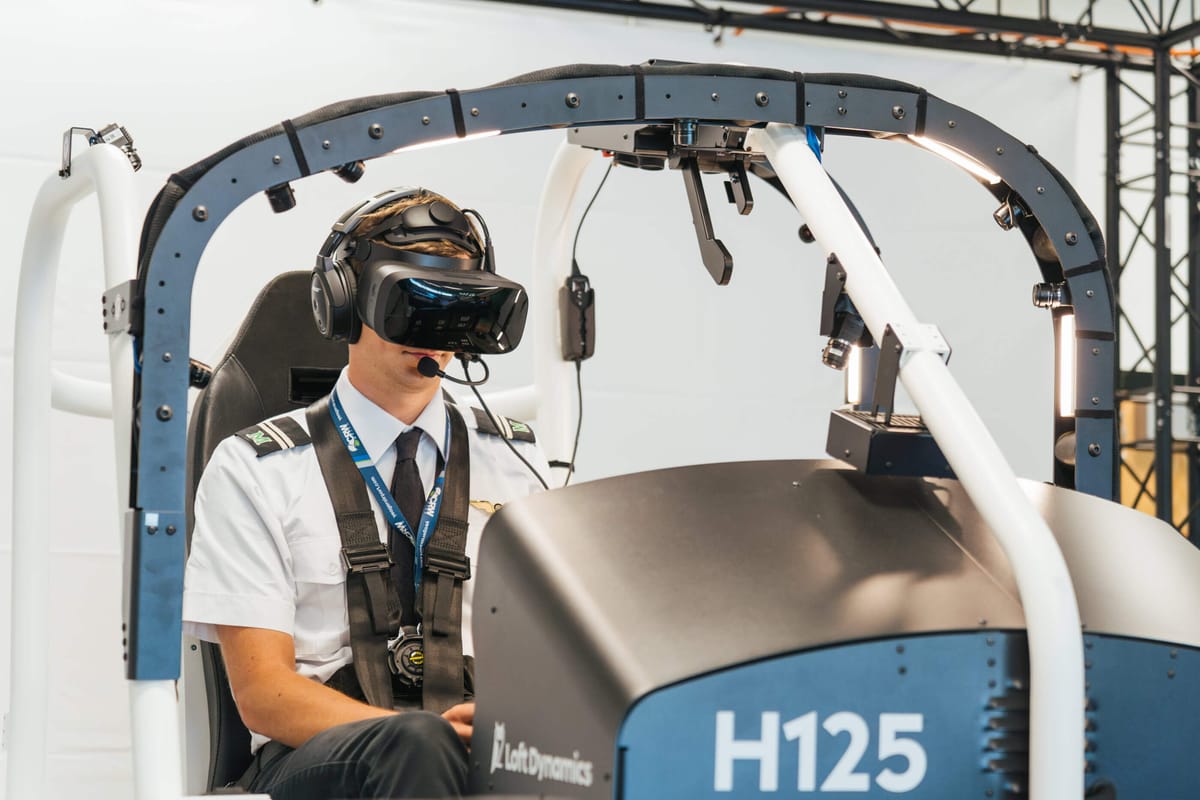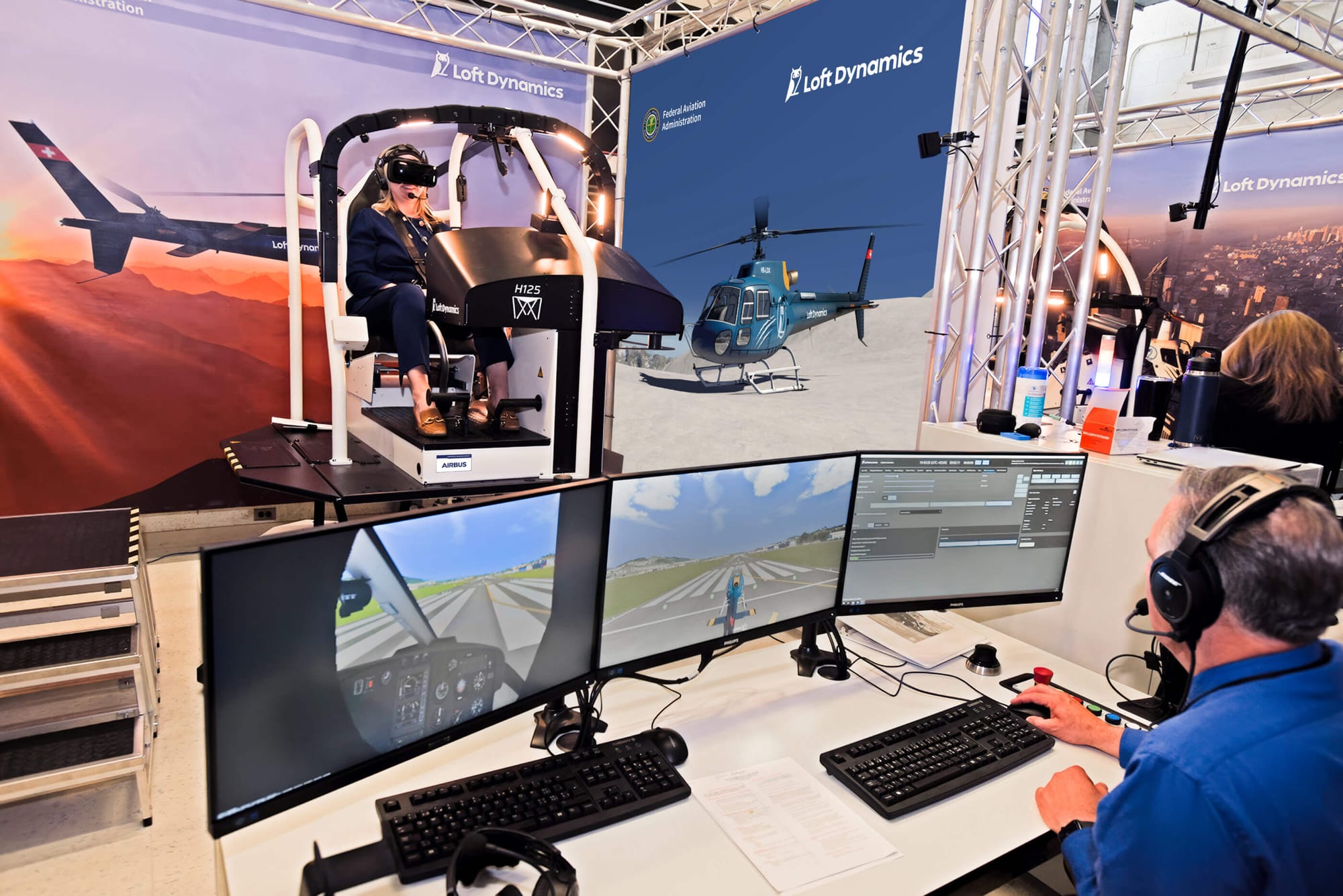
A flight simulator rig using a VR headset has been FAA qualified for the first time.
The rig in question is Loft Dynamics’ simulator for the Airbus Helicopters H125 (formerly known as Eurocopter AS350 Squirrel) helicopter. FAA qualification means US helicopter pilots can now use this simulator to train and receive credit toward official pilot ratings. Loft Dynamics’ rig has also been EASA certified since 2021, meaning EU pilots can do the same.
Loft Dynamics says this certification covers training for engine failures, abnormal and emergency procedures, instrument approaches, as well as challenging maneuvers such as sling load operations and pinnacle operations.
The simulator uses a Varjo VR-3 headset, which offers retinal resolution within the central 27° of the field of view, letting pilots clearly see even the smallest virtual cockpit elements. The physical cockpit it’s paired with has all the same controls as the real helicopter. But unlike some newer headset-based simulators, the real cockpit isn’t visible to the pilot, as this simulator doesn’t use mixed reality. That’s apparently because Varjo’s passthrough, available on its XR-series headsets, isn’t depth and scale correct and thus wouldn’t meet the standards of regulators.
To track the pilot’s hands and arms, Loft Dynamics developed its own computer vision algorithm that uses a series of cameras positioned above the pilot, in combination with QR codes on the cockpit for calibration.
Loft Dynamics claims this VR-based simulator is both cheaper and smaller than traditional FAA-qualified flight simulators, which use a complex array of huge screens or projectors. Those traditional displays also lack the stereoscopic 3D you get with VR headsets, which is important for depth perception at low altitudes.

Loft Dynamics recently said it has seen an “unprecedented” increase in demand for VR flight simulators now that the technology has matured enough to be competitive with traditional methods. It plans to obtain FAA qualification for a wider range of aircraft, including fixed-wing and eVTOLs, in the future.
Flight simulators are yet another area where virtual and augmented reality are delivering simulation that approaches the experience of real-world training at just a fraction of the cost.


